Easy Tricks for Extending the Life of Produce
As we limit time in stores during the pandemic, get the most out of groceries
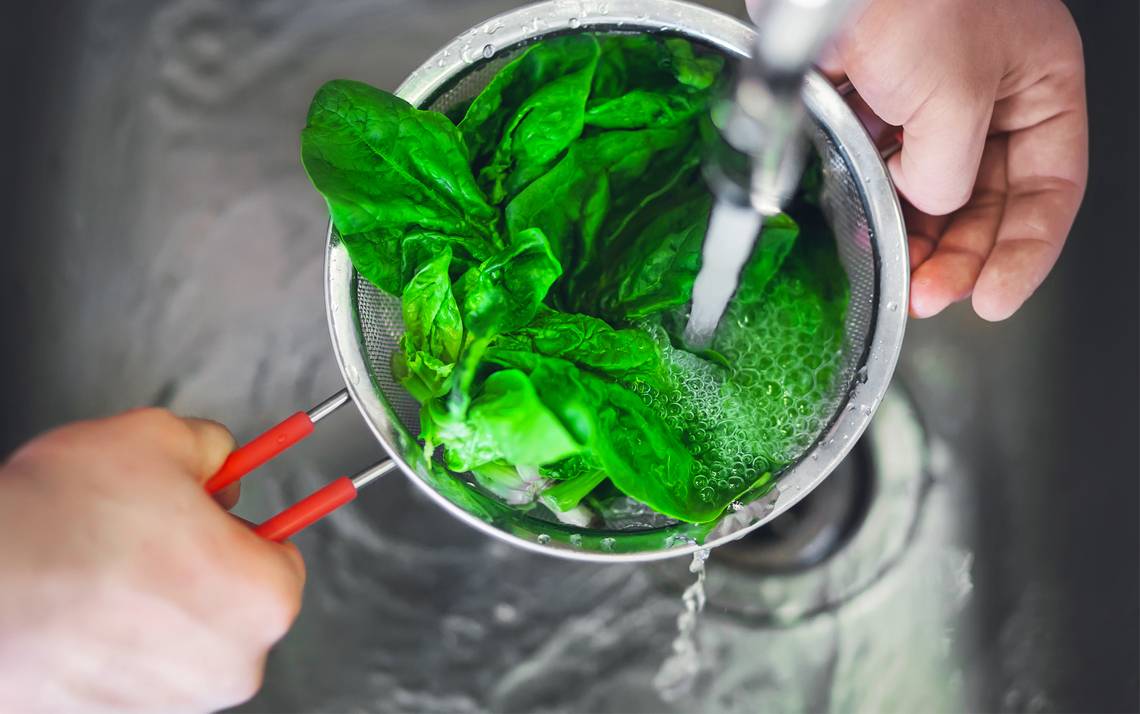
Susan Bartone’s special storage system helps her fruits and vegetables last longer.
She lines the bottom of a Tupperware with a paper towel before placing her spinach, strawberries and portabella mushrooms in the container, then she places another sheet on top of the produce and closes the lid. Paper towels absorb moisture, extending the life of her produce for nearly a week.
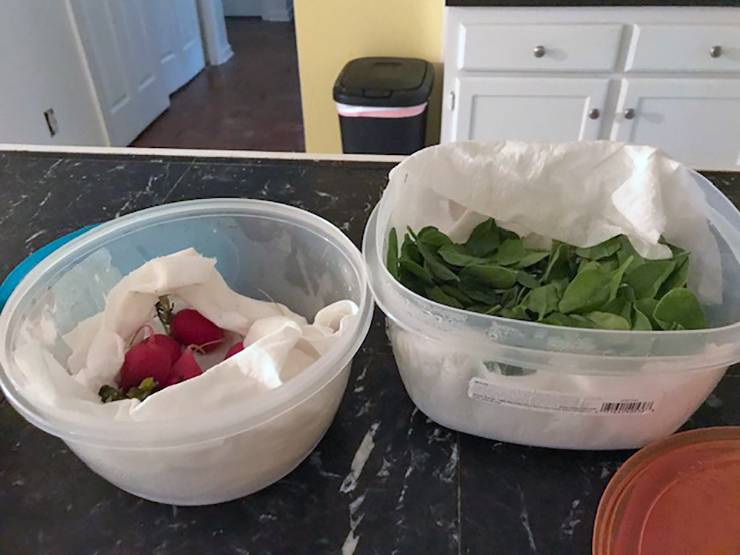 “I like my produce to stay fresh since I’m only shopping once a week,” said Bartone, associate project lead at the Duke Clinical Research Institute.
“I like my produce to stay fresh since I’m only shopping once a week,” said Bartone, associate project lead at the Duke Clinical Research Institute.
Bartone was among nearly 100 Duke community members who recently attended the live webinar “Food Matters” to learn about ways to store and clean produce during social distancing. The next webinar on June 10 will cover healthy ways to eat out. Sign up here to participate.
“Many of us are going to the grocery store less, so we want to maximize the life of our fresh fruits and vegetables,” said Lauren Kruse, a dietitian with LIVE FOR LIFE, Duke’s employee wellness program.
Here are some strategies for cleaning and storing your produce.
To Wash – or Not
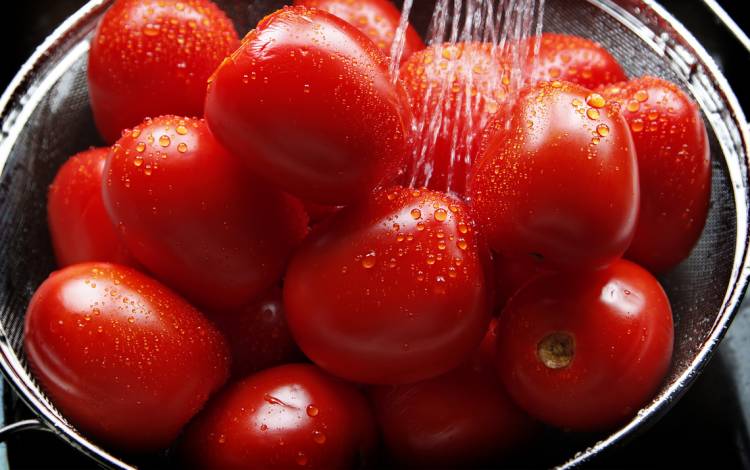
There is no evidence of COVID-19 transmission occurring through food at this time, but unwashed produce carries risks such as bacteria, like E. coli, and residue from pesticides to control pests and weeds. Organic produce, a more expensive option, may contain bacteria but grows without pesticides.
When it comes to cleaning produce, the U.S. Food and Drug Administration recommends removing damaged or bruised areas and only washing produce with water. Do not use soap, detergent or produce washes.
Annie Scott, a LIVE FOR LIFE dietitian, recommends washing produce, regardless of it being organic or not, to eliminate the chance of bacteria and pesticide residue.
“Not all foods have the same risks, but it’s important to wash your produce as a safety precaution for contamination,” Scott said.
Krista Hunt, program coordinator for the Duke School of Medicine’s Office of Duke-National University of Singapore Affairs, washes individual-sized portions of blackberries and blueberries right before putting them in her Greek yogurt.
“I don’t want to waste my money by letting the fruit rot before I’m done eating it,” Hunt said.
To Chill or Not to Chill
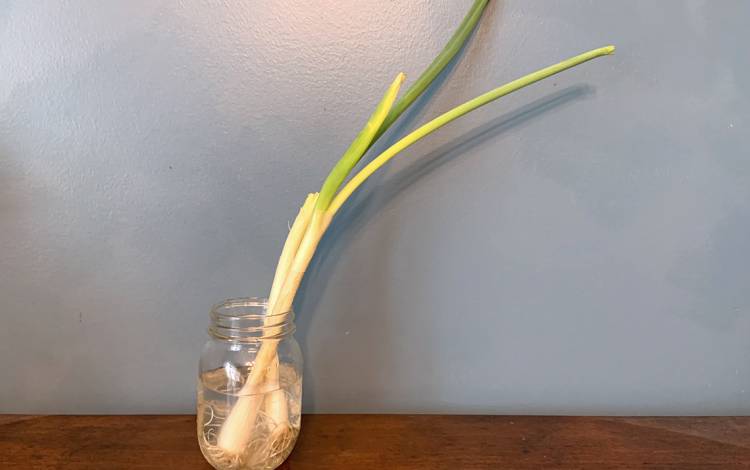
Store fruits and vegetables in the same environment as the grocery store.
If the produce you buy is at room temperature, keep the items at room temperature. If they’re in refrigeration, put them in your fridge.
Scott stores green onions in a way that keeps them growing. She puts the root ends of the green onions in a glass of water next to a window and changes the water once a week.
“It will grow another green onion over and over again as you change out the water and keep it fresh,” Scott said. “It's a good way to keep that going for three or four cycles.”
Learn additional storage hacks for fruits and vegetables here.
Perfect Fridge Drawer Settings

Refrigerator drawers can extend the life of fruits and vegetables by controlling airflow around produce.
Low-humidity drawers, called crispers, keep a vent open to allow ethylene gas to escape. The gas is a plant hormone that starts the fruit ripening process. Fruits and vegetables that decay easily, like apples, pears, cantaloupe, peaches and avocados, should be stored in the low-humidity with a drawer vent open.
Lauren Kruse, a LIVE FOR LIFE dietitian, recommends keeping the crisper drawer about two-thirds full to give the fruits and vegetables space to breathe.
A high-humidity drawer has a closed vent to trap moisture. Put produce that’s likely to wilt and has thin skin – greens, broccoli, Brussel sprouts, asparagus, lemons and strawberries – in a closed vent drawer because high-humidity keeps produce crisp and fresh.
“Put a sticky note on the drawers until you really get the hang of which drawer each thing would go best in,” Kruse said.
Lora Griffiths, senior grants and contracts administrator with the Campus Grants Management Team, doesn’t have drawers in her 1937 General Electric fridge, which her husband purchased from a second-hand shop about 35 years ago. Still, she puts produce in the bottom shelf, away from the built-in freezer in the top row of her fridge.
Griffiths has found the bottom shelf to be the driest spot in the fridge. Produce next to the fridge’s built-in freezer often ends up mushy and wilted.
“You own a fridge long enough and learn through mistakes on where to store things,” she said.
Freeze Your Produce

Save your fruits and vegetables by storing them in the freezer.
First, cut and chop your produce into slices. Then blanch them, a process in which you place fruits and vegetables in boiling water for two to three minutes before placing them in a bowl of ice water. Blanching keeps produce crisp.
Spread produce onto a baking sheet, then let it dry and place it in the freezer for 60 to 90 minutes. Finally, transfer the fruits and vegetables to freezer bags and store them in the freezer.
“Taking these steps preserves the quality of the food and makes it easier when it comes time to make a meal,” Kruse said. “When you’re ready to cook, you can take out exactly as much as you need and keep the rest of the produce frozen.”
Plant a Garden
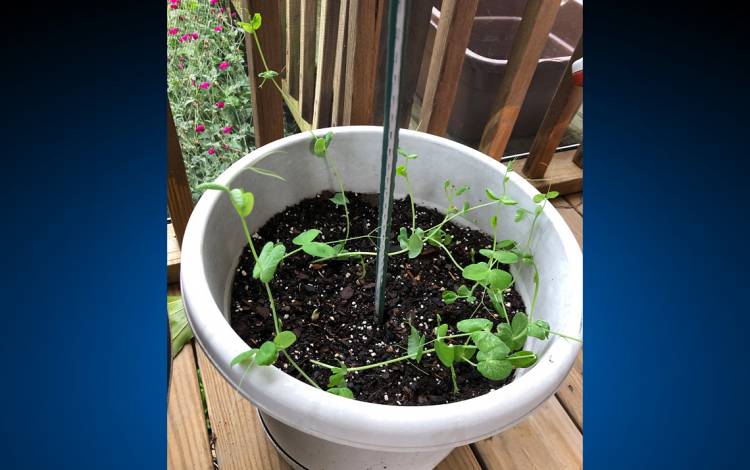
Scott said one additional way to ensure a steady supply of fresh produce is to plant a garden.
Get lightweight containers that you can easily move in and out of sunlight and rain. Scott said potatoes, lettuce, basil, rosemary, eggplants, peas and peppers are great options for container gardening.
“I’m not talking about you needing to dig up your whole backyard and turning it into this huge endeavor,” Scott said. “A lot of vegetables and especially herbs grow really well in little pots and containers on your porch or even in a sunny window in your kitchen.”
Felice McNair, manager of Duke Health’s Professional Compliance Audits, has nine containers on her back porch to grow heirloom tomatoes, habanero peppers, radishes and pickling cucumbers.
McNair makes zucchini lasagna with homemade tomato sauce and zucchini from her garden, mixes fresh radishes with homegrown lettuce and snacks on cucumbers.
“The vegetables are so good. I’ll eat them straight from the garden,” she said.
Help share the proactive and extensive work being done by all Duke community members during the COVID-19 outbreak. Send ideas, shout-outs and photographs with here or write working@duke.edu